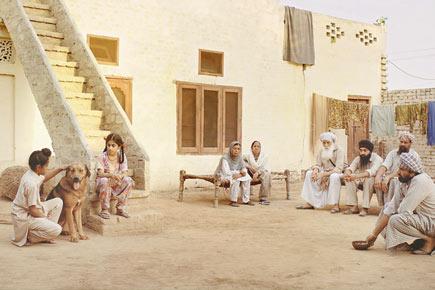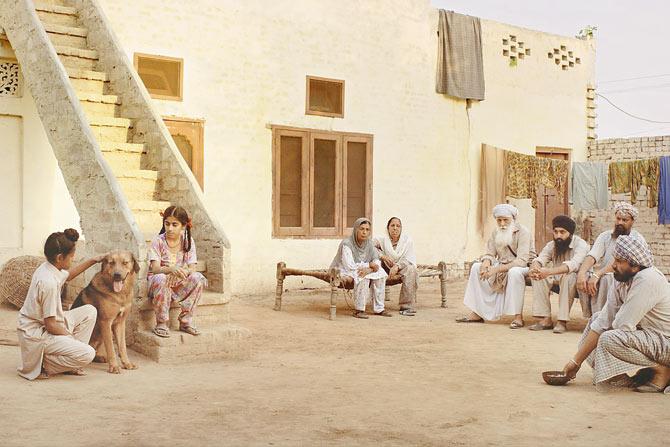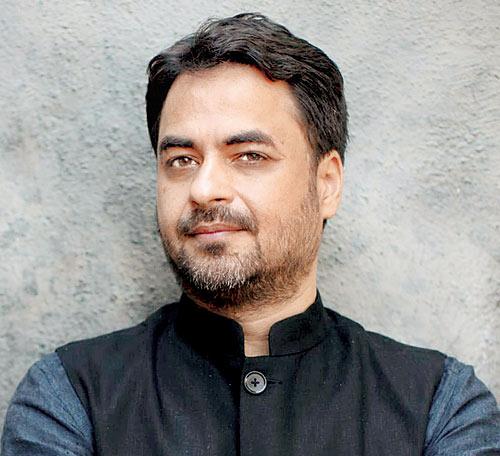Gurvinder Singh’s National Award-winning film aims to give this generation a crash course on the state's troubled history

The film is based on two stories by author Waryam Singh Sandhu, and was shot in Amritsar and Ferozepur
Only when a movie can be universal in its appeal, and resonate with people at the time it’s released, does it make sense to make it. With Chauthi Koot (Fourth Direction), I knew that would happen. That it would find an audience beyond Punjab. It’s because we are living in a time of disturbance here, and across the world,” says Gurvinder Singh, director of the National Award-winning Chauthi Koot, which became the first Punjabi film to be premiered at Cannes last year, and released across India this Friday.

The film is based on two stories by author Waryam Singh Sandhu, and was shot in Amritsar and Ferozepur
ADVERTISEMENT
Set in 1984 Punjab, this is when the Indian paramilitary forces were fighting a bloody battle with Khalistani separatists. Based on two stories by author Waryam Singh Sandhu, Chauthi Koot and Hun Main Theek Haan, the film was shot in Amritsar and Ferozepur. The story follows two Hindu friends Jugal and Raj who board a train travelling to Amritsar and are in a compartment with a few Sikh travellers. Tension and fear is high. Jugal then tells another story of a night he and his family took refuge at a Sikh home in the middle of the night, and how the head of the household led them to safety. This was also a time when the Sikh militants had ordered that families who owned dogs should prevent them from barking, lest the Indian military find out where they are.

Gurvinder Singh
Singh, whose family moved to Delhi after Partition and was living in the capital during the riots that followed the assassination of the then Prime Minister Indira Gandhi, says that making the movie took him back to his childhood when he used to live in Delhi.
“I have my own memories of that time. We were locked up inside the house, and could see the mobs on the streets. The gurudwara near our house was burned down. Our Hindu neighbours used to patrol the streets to make sure the Sikh households were safe. It all came back to me,” says the 42-year-old over the phone from Delhi. He had read an earlier work by Sandhu called Broken Arms, about a Hindu trader family being gunned down, and was initially keen on making that story. “But then I was advised to read his other work and that’s how I chanced upon these stories,” he says.
The movie, a take on the fear and paranoia that prevailed in Punjab at the time, has done well with international audiences at various film festivals it has travelled to. At a recent screening in Mumbai, Bollywood’s swish set was moved to tears by the two-hour long film. It has also got glowing reviews in the press internationally — Dan Fainaru of the Screen Daily summed it up aptly when he said, “Singh's directorial choices are often remarkably effective, whether in the camera angles, the long travelling shots, the nervous tension and insecurity portrayed in every glance and reflected in every silence and echoed in every sound.”
Singh feels that the film connected with people as most, who had no clue about the Punjab situation, became curious about it. “But I told them that knowing or not was not relevant. I hope that people can relate to it emotionally rather than intellectually." Singh spent time with Sandhu, writer of the two stories it has been adapted from, in Canada, before he wrote the screenplay. One aim behind making the movie was also to add a narrative to Punjab’s checkered history.
“Filmmakers are not just artists — they also become historians and philosophers. They document the past and this is my contribution to history,” says Gurvinder, who has previously made short film Pala, a documentary based on Punjabi folk singers, and Anhe Ghore Da Daan (Alms for a Blind Horse) in 2011 which dealt with the angst and distress of the marginalised lower caste in Punjab.
The movie also becomes a rare Punjabi movie of its kind to get a pan-India release. But Singh hopes that people don’t approach it as a “Punjabi” movie. “It’s great that regional cinema is now moving beyond the state. I just want people to go watch it as a movie, not as a movie specific to Punjab. They need to enjoy the emotional content. It’s all about experiencing that.”
 Subscribe today by clicking the link and stay updated with the latest news!" Click here!
Subscribe today by clicking the link and stay updated with the latest news!" Click here!







